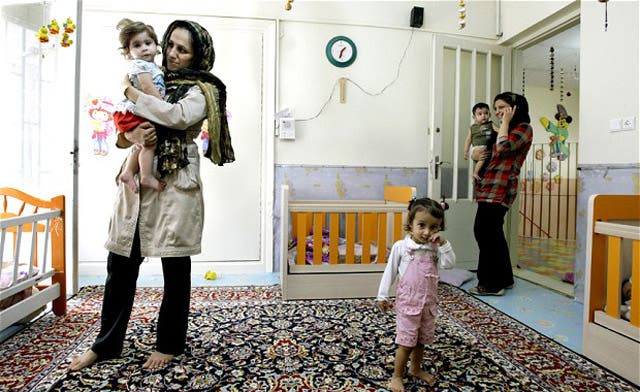Iran gives up birth control program to boost population
Iran has decided to get rid of its birth control program completely in a radical policy change envisioned to create a baby boom that could more than double its current population.
Supreme Leader Ayatollah Ali Khamenei recently said that the two-decade old policy of controlled growth must end and that Iran’s target is to increase its population to 150 to 200 million.
The country’s current population is about 75 million, according to recent census. Iran also topped the global list of countries facing the greatest drop in fertility rates since 1980, according to data published in 2009 by the United Nations. The reduction of births was accomplished with the help of a publicly-backed initiative introduced in the early 1990s that included vasectomies, health ministry-issued contraceptives, statutory family planning advice for newly-weds and a state-owned condom factory.
Ayatollah Khamenei made a nationally televised speech, invoked by the late Ayatollah Ruhollah Khomeini, spiritual leader of the revolution, to announce that current birth control practices were no longer appropriate.
“The policy of population restriction should definitely be revised and the authorities should build the culture in order to abandon the current status of one child, two children [per family],” he said.
“The figure of 150 or 200 million was once stated by the Imam [Khomeini] and that is the correct figure that we should reach.” He added.
After the announcement was made, Marzieh Vahid Dastjerdi, the health minister, told Iranian journalists that the funding had been withdrawn and that the 190 billion rials ($15.5 million) would now be used to encourage bigger families.
“The budget for the population control program has been fully eliminated and such a project no longer exists in the health ministry,” she said. “The policy of population control does not exist as it did previously.”
Mousa Sharififarid, an Iranian writer and pro-democracy activist, said, “the Iranian regime should rather provide prosperity for its citizens who live in miserable conditions inside the country and allow more than three million Iranian expatriates to return home than seek to increase the population.”
“In Iran, more than 10 million people cannot afford to buy meat even once a month, according to a recent survey,” Sharififarid said.
“It is ridiculous to see the country seeking to increase its population when many of its citizens are still trapped in deep poverty,” he added.
Iranians have been asked to have more children in the past by President Mahmoud Ahmadinejad; in his bid to help Iran defeat the West. Three years ago, the president also introduced a scheme that put £600 in a bank account for every new born baby, with an additional £60 every year until they reached 18.
However, experts believe the elimination of birth control will only lead to the reluctance of couples to marry and have children in an economy full of unemployment, inflations and more recently, the effects of Western sanctions due to Iran’s nuclear program.
Ali Reza Marandi, a former health minister and current member of the parliamentary health committee, told Arman newspaper that he didn’t think the action taken would work at all. “Our problem is that our young people either don’t marry or marry late and in Iran, as long as there is no marriage, there are no babies. And those people who marry late suffice to only one child,” he said.
Ali Reza Khamesian, a columnist whose work appears in several pro-reform newspapers, told the Associated Press that the change in policy also may be an attempt to send a message to the world that Iran is not suffering from sanctions imposed over the nuclear program that the West suspects is aimed at producing weapons — something Tehran denies.
Abbas Kazemi, a doorman in a private office building, said he cannot afford to have more than two children with his salary of about $220 (4.2 million rials) a month.
“I cannot afford daily life,” he said. “I have to support my wife and two children as well my elderly parents.”
More than half of Iran’s population is under 35 years old. Those youth form the base of opposition groups, including the so-called Green Movement that led unprecedented street protests after President Mahmoud Ahmadinejad’s disputed re-election in 2009. Some experts have said that trying to boost the numbers for upcoming generations also could feed future political dissent.
“Young people are the heart of the Arab Spring, or the Islamic Awakening as Iran calls it,” said Mustafa Alani, an analyst at the Gulf Research Center based in Geneva. “Countries that haven’t faced major protests during the Arab Spring still have to be mindful that the demands of the youth are still there.”
